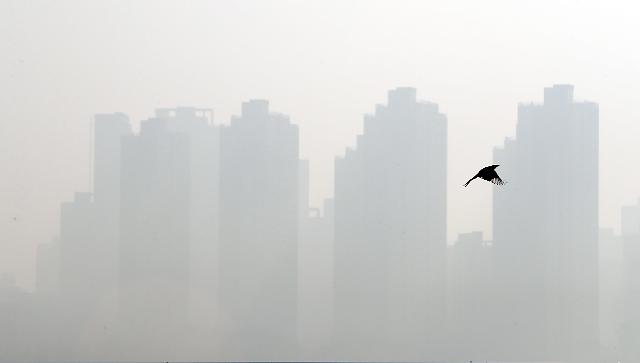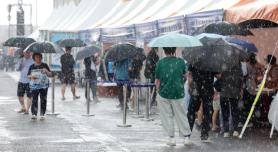
[Yonhap News Photo]
SEOUL -- South Korea will conduct a joint offshore experiment with China this year to determine whether artificial rainfall is effective in alleviating air pollution caused by fine dust, which has been a source of prime public concerns and diplomatic disputes in Northeast Asia.
Fine dust, which refers to particles smaller than 10 micrometers, causes various respiratory problems. China has been cited in South Korea as the main culprit for aggravating particulate pollution on the Korean peninsula, but experts also point to power plants and vehicles using fossil fuel.
Environment Minister Cho Myung-Rae said Thursday that the government would step up cooperation with China to ease fine dust pollution. "We will pursue 'win-win' cooperation based on trust to drastically reduce fine dust," he said, promising to share information and policy with China and establish a joint early warning system.
South Korea has been hit by severe fine dust for six days. The density of fine dust rose to record levels in Seoul and other areas.
Cho's office acknowledged China's accumulated experience in artificial rainfall after South Korea's first offshore experiment on January 25 in the Yellow Sea to create rain clouds failed to produce any meaningful results.
Artificial rain has been used mainly to cleanse the air by using cloud seeding, a specific form of weather manipulation which aims to replicate the effects of rainclouds in dry, polluted or smoggy regions. China and India have used artificial rainfall to improve air quality. In August 2008, Beijing used artificial rainfall to ensure a dry night for the Olympic opening ceremony.
There are still doubts about the efficacy of artificial rain as a fundamental way of fighting air pollution. A research center run by Kangwon National University's department of biological environment found that at least five millimeters of rain per hour should be used to reduce the concentration of fine dust.
Copyright ⓒ Aju Press All rights reserved.



